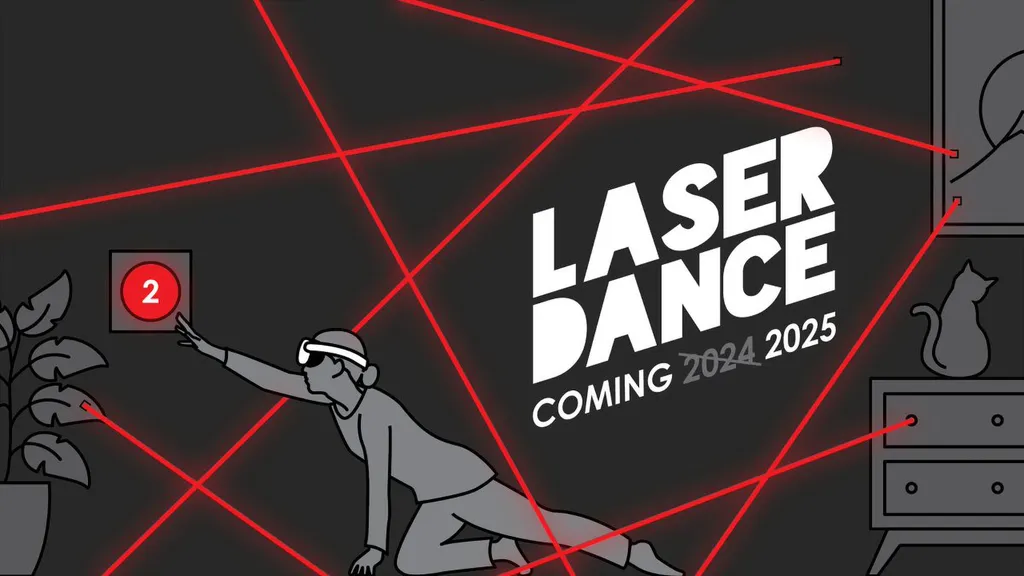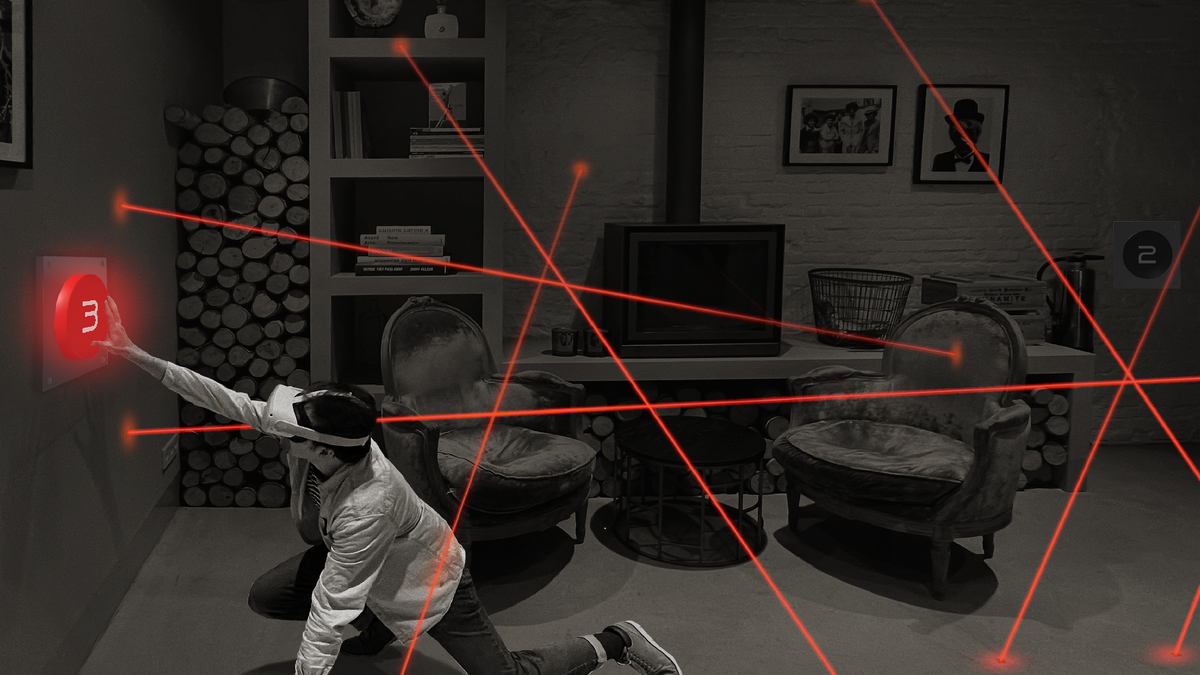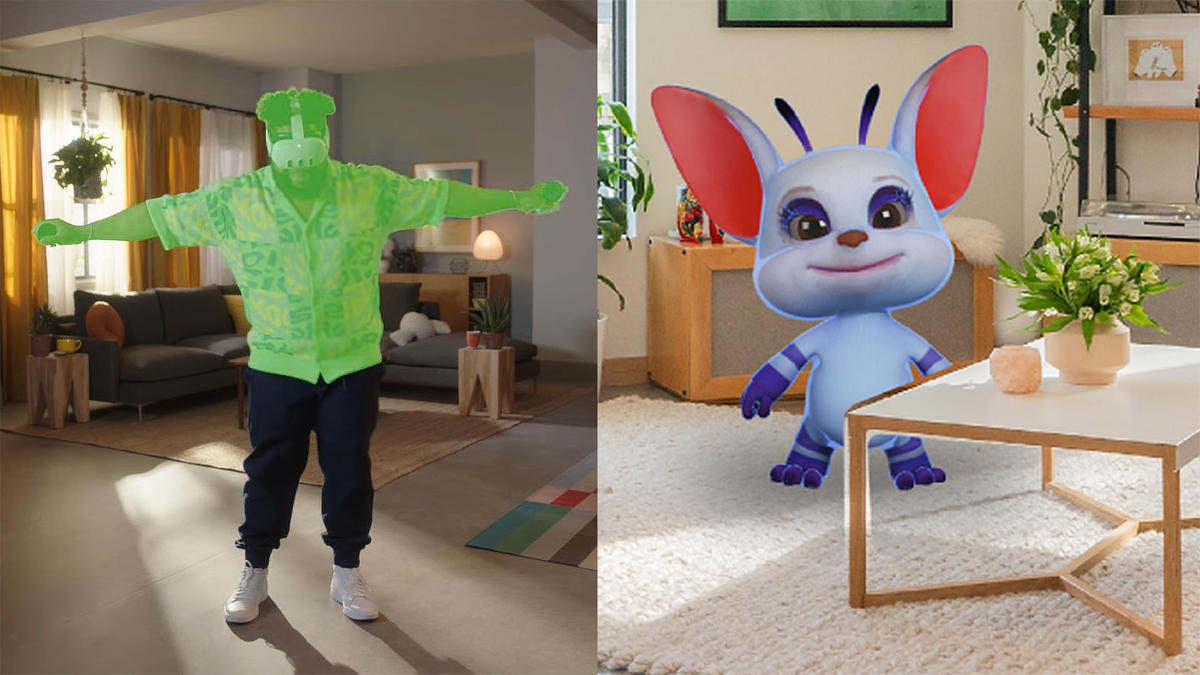Laser Dance is delayed to next year.
If you're unfamiliar with it, Laser Dance is an upcoming Quest 3 & 3S mixed reality game from the developer of Cubism, Thomas Van Bouwel. The game has you dodge lasers in your home to reach and press buttons on your walls, and was originally set to launch late this year, shortly after Quest 3S.
In a thread on X, Van Bouwel explained the reasons behind the delay. Here's his full statement:
"Making a game that needs to adapt to almost any room turns out to be difficult, especially when building on MR API's that are fast evolving and have recurring issues (like scene drift) 😅
The initial launch window was announced when development primarily took place on Quest 2, but upgrading to many of the new API's on Quest 3 (mesh, IOBT, depth) and dealing with some issues like scene drift has taken a significant chunk out of my dev time this year.
All of that new MR tech is worth it in the long run for Laser Dance though, as it will make for a much more immersive experience. But the last thing I want to do is rush out a game on unstable tech, where the gameplay hasn't gotten as much attention as the tech-stack.
I've definitely also underestimated how long level-design would take. I'm constantly evolving my tools to emulate levels in different room layouts, but even so the process of making levels ends up being slow, as they need to be tested against many different scenarios.
That all being said, I'm very grateful for all the support people have expressed for Laser Dance so far, and I'm still excited to bring it to Quest next year!"
During Meta Connect 2024, Meta CTO Andrew Bosworth apologized to all Quest developers for "the ground constantly shifting under your feet for years now", committing to a more stable platform going forward.
"It can be incredibly messy, and we know it's been a tough ride for developers over the last couple of years."
The Scene Drift Issue
When it comes to the scene drift issues Van Bouwel mentioned, dozens of developers told UploadVR they've experienced similar issues on both Meta Quest 3 and Apple Vision Pro, finding them to be a significant barrier to building the kind of mixed reality experience they envision.
"It makes us feel like we can’t make a reliable experience." - Alex Coulombe of Agile Lens.
"I really enjoy experiences that are closely tethered to the real world, like objects on walls or tables you can tap or slap to provide some real world haptics, and drift kills that." - RJ White, developer of Stabby, FireZone, and Punch Buddies.
"It's the single biggest issue holding back many enterprise use cases." - Russell Varriale, co-founder of Resolve.
"On the Vision Pro it’s terrible. It’s the only reason I haven’t ported PianoVision yet." - Zac Reid, developer of PianoVision.
However, some of this may come down to exactly how developers implement positioning for their virtual objects, and how Meta's solutions and best practices have changed in recent years.
Van Bouwel tells UploadVR he currently uses a single Spatial Anchor for the entire Laser Dance scene, with all the lasers and buttons parented to it. According to Meta's documentation, though, Spatial Anchors should not be used for objects greater than 3 meters away, warning that "any inaccuracies in pose are amplified the farther away an object is from its spatial anchor". And to avoid developers needing to manually manage Spatial Anchors at all, Meta now recommends using its new Mixed Reality Utility Kit (MRUK) framework's World Lock feature, which it says handles spatial anchoring automatically under the hood.
But as Van Bouwel explained in his statement, Laser Dance has been in development for years, long before these new tools and practices, and thus he's been affected by exactly the "ground constantly shifting" Meta's CTO acknowledged. Van Bouwel plans to investigate migrating to using MRUK for its World Lock feature eventually, but for now, the focus is on getting a stable build with a custom drift solution ready for wider testing, ahead of the highly anticipated launch now set for next year.
The extra development time isn't only for fixes. As Van Bouwel also mentioned in his statement, Laser Dance is incorporating inside-out body tracking to make laser dodging as accurate as possible, as well as the Depth API for dynamic occlusion, two APIs that haven't even existed for a year yet.
Based on my colleague Henry Stockdale's impressions from earlier this year, it sounds like Laser Dance will be worth the wait.

































